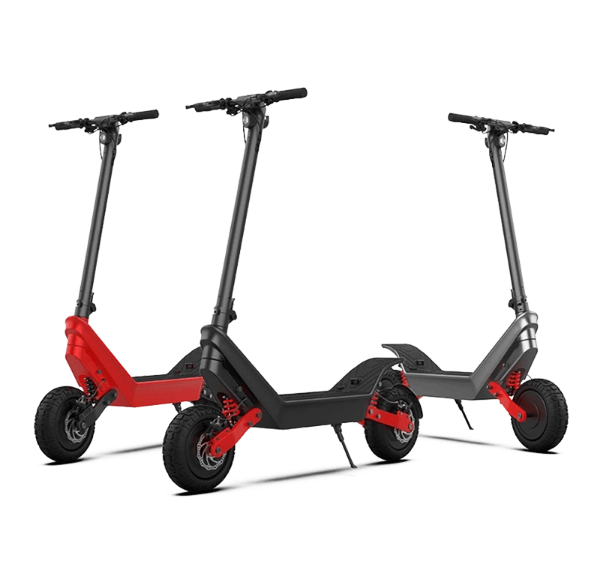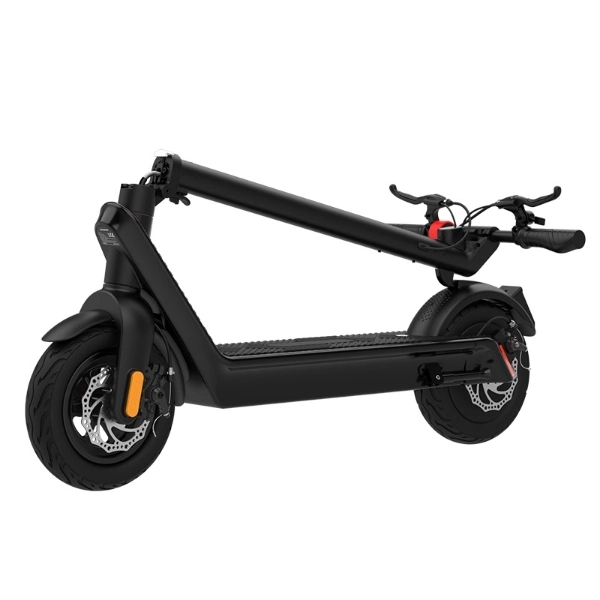Home > ABOUT KIXIN > Blog > Manufacturing Process of a Portable Folding Electric Scooter
Manufacturing Process of a Portable Folding Electric Scooter
With the rapid growth of micro-mobility solutions, the demand for portable folding electric scooters has surged. These scooters provide a compact, efficient, and environmentally friendly mode of transportation, especially in urban areas. In this blog post, KIXIN will share with you the manufacturing process of the portable folding electric scooter for sale.
1. Materials Selection
The choice of materials is crucial for ensuring the scooter is lightweight, durable, and corrosion-resistant. The most commonly used materials are:
- Aluminum Alloys: Known for its excellent strength-to-weight ratio, aluminum is widely used in the frame of the scooter. It' s lightweight yet strong enough to handle the stresses and loads encountered during operation.
- Carbon Fiber Composites: These materials are sometimes used for components like the handlebars and other weight-sensitive parts. Carbon fiber offers superior strength at a fraction of the weight of metals.
- ABS and Polycarbonate Plastics: These plastics are typically used for the external housing of electronic components. They are durable and protect against environmental factors.
Once the materials are selected, they are procured from suppliers and inspected for quality and compliance with manufacturing specifications.
2. Frame Fabrication and Assembly
The frame is the backbone of the scooter, supporting all mechanical and electrical components. Fabrication typically begins with cutting aluminum or carbon fiber sheets into the desired frame shapes using CNC (Computer Numerical Control) machining. CNC machines allow for high precision and repeatability, ensuring that each component fits perfectly.
Once the frame components are cut, they are joined using TIG (Tungsten Inert Gas) welding for aluminum or adhesive bonding in the case of carbon fiber. These processes ensure strong, durable joints. After welding, the frame undergoes a heat treatment process to relieve internal stresses and improve strength.
Following this, the frame is typically anodized or powder-coated to provide corrosion resistance and enhance its aesthetic appeal. After coating, various mechanical components such as the folding hinges, footboards, and steering mechanism are installed using specialized jigs and fixtures to maintain alignment and precision.

3. Motor and Drive System Assembly
The heart of the electric scooter is its motor, typically a brushless DC (BLDC) motor. BLDC motors are favored for their efficiency, low maintenance, and compact size. The manufacturing of the motor involves winding copper coils around stators, installing permanent magnets on the rotor, and assembling these parts with bearings and shafts.
Once the motor is assembled, it is installed in the rear wheel hub or attached to the scooter frame depending on the drive configuration (hub motor vs. belt/chain drive). The scooter's drive system is usually direct drive with the motor integrated into the wheel, which minimizes the number of moving parts and improves reliability.
4. Battery and Electrical Systems Integration
The electric scooter is powered by a lithium-ion (Li-ion) battery pack, which offers high energy density and longevity. The battery cells are sourced from manufacturers specializing in Li-ion technology and are assembled into packs with battery management systems (BMS). The BMS ensures that the cells are charged and discharged evenly, preventing overheating, overcharging, or deep discharge, all of which could damage the cells.
The battery pack is installed into the scooter' s deck, ensuring a low center of gravity for stability. Special care is taken in insulating and waterproofing the battery compartment to protect it from external elements such as water, dust, and vibration.
In addition to the battery, various other electrical systems need to be integrated, such as the motor controller (which regulates the motor's speed and torque), the throttle (usually a hall-effect sensor-based system), and the display unit (which provides real-time information to the rider). These systems are connected via a wire harness and securely fastened to the frame.
5. Folding Mechanism Design and Installation
One of the most critical aspects of a portable electric scooter is the folding mechanism. This requires a well-engineered system that is both robust and easy to operate. The most common folding mechanism includes a locking hinge with a release lever. The hinge is designed to withstand repeated use without becoming loose or unstable.
Advanced models also use quick-release levers and magnetic latches that automatically secure the scooter in place when folded. The components for the folding system are usually CNC-machined from steel or aluminum to ensure durability, and they are subjected to stringent mechanical testing to guarantee they can endure the forces experienced during folding and unfolding.

6. Software and Electronics Assembly
Modern electric scooters feature embedded electronics for controlling various aspects of the scooter' s performance, such as speed, braking, and motor efficiency. The software is usually developed in-house or by specialized third-party firms, and the firmware is loaded onto the microcontroller unit (MCU) housed within the scooter's controller box.
Other electronic components, such as the LED lights, Bluetooth modules, and GPS systems, are integrated into the scooter' s electronics architecture during the assembly process. These components are connected using flex circuits or wire harnesses that are neatly routed through the scooter' s frame to prevent damage from vibrations or mechanical stress.
7. Final Testing and Quality Control
Before a scooter is shipped, it undergoes rigorous testing to ensure it meets safety, performance, and durability standards. Key tests include:
- Motor Performance Testing: Ensuring the motor operates within the specified torque and speed ranges.
- Battery Testing: Verifying that the battery operates at its rated capacity and voltage under various loads.
- Durability Testing: Subjecting the scooter to vibration, impact, and fatigue tests to simulate real-world usage.
- Waterproofing Tests: Ensuring that the scooter' s electronic components and battery compartment are sealed against water ingress.
- Ride Testing: A human operator performs ride tests to assess the scooter's handling, braking, and folding mechanism.
Conclusion
The manufacturing of a portable folding electric scooter involves the integration of multiple systems and precise engineering. From material selection and frame design to the integration of motor, battery, and folding mechanisms, each step in the process requires careful planning and execution. With proper manufacturing protocols, these scooters can provide a reliable, efficient, and eco-friendly transportation solution for urban commuters.
- Provide repair addressProvide repair address
- WARRANTY1 year full product warranty
- Provide accessoriesAdditional accessories will be provided for
replacement when bulk orders are shipped from China - Online guidanceOnline guidance on how to repair or replace
